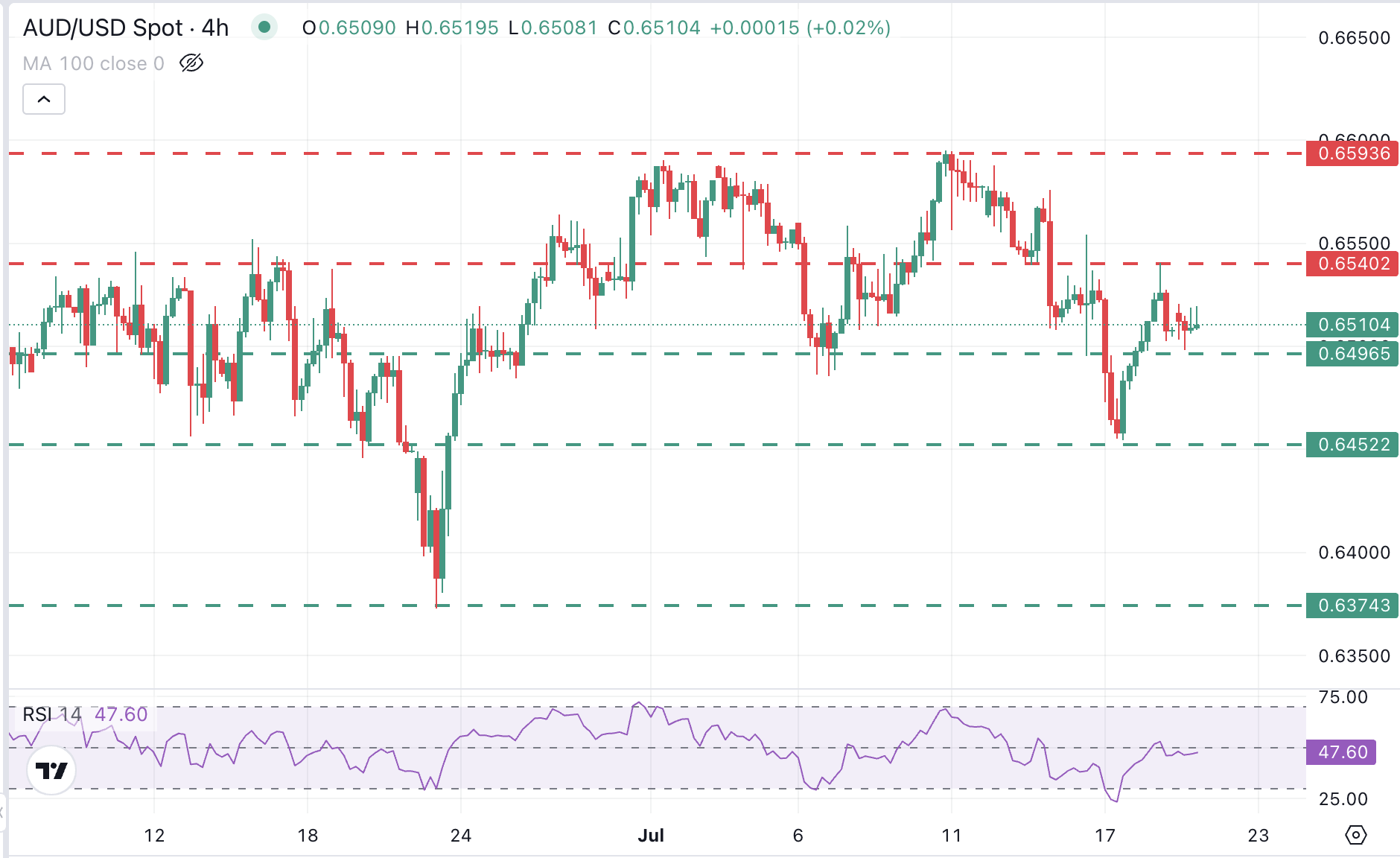AUD/USD Price Forecast: Looking for direction above 0.6500
- The Aussie Dollar treads water on Monday following a sharp reversal last week.
- A moderate risk appetite and a softer US Dollar are supporting the Aussie.
- Further depreciation below 0.6500 would increase bearish pressure towards 0.6450 and 0.6375.
The AUD/USD is hesitating right above 0.6500, practically flat on the day. The risk on market and the softer US Dollar amid lower US Treasury yields keep the pair supported, but upside attempts seem limited. The broader technical picture remains messy, following a significant reversal last week.
The fundamental background is moderately supportive on a calm trading session without any relevant macroeconomic releases. News that a likely meeting between US President Trump and Chinese PM Xi at the APEC summit will help to normalize relations between the world’s two major economies is contributing to feeding investors’ optimism
Technical analysis: Hovering above key support at 0.6490
AUD/USD Chart

The technical picture is mixed. Oscillators are showing a lack of momentum with the Relative Strength index on the daily and 4-hour charts wavering around the 50 level, and the Doji candles on the 4-hour charts highlighting a hesitant market.
The pair is hovering at a short distance above the intra-day low at 0.6500. Below here, negative pressure would increase with bears aiming for the July 17 low at 0.6450 first and then the June 23 low, at 0.6375. On the upside, resistances are at Friday's high at 0.6545 and the early July highs, at the 0.6590 area.
Australian Dollar FAQs
One of the most significant factors for the Australian Dollar (AUD) is the level of interest rates set by the Reserve Bank of Australia (RBA). Because Australia is a resource-rich country another key driver is the price of its biggest export, Iron Ore. The health of the Chinese economy, its largest trading partner, is a factor, as well as inflation in Australia, its growth rate and Trade Balance. Market sentiment – whether investors are taking on more risky assets (risk-on) or seeking safe-havens (risk-off) – is also a factor, with risk-on positive for AUD.
The Reserve Bank of Australia (RBA) influences the Australian Dollar (AUD) by setting the level of interest rates that Australian banks can lend to each other. This influences the level of interest rates in the economy as a whole. The main goal of the RBA is to maintain a stable inflation rate of 2-3% by adjusting interest rates up or down. Relatively high interest rates compared to other major central banks support the AUD, and the opposite for relatively low. The RBA can also use quantitative easing and tightening to influence credit conditions, with the former AUD-negative and the latter AUD-positive.
China is Australia’s largest trading partner so the health of the Chinese economy is a major influence on the value of the Australian Dollar (AUD). When the Chinese economy is doing well it purchases more raw materials, goods and services from Australia, lifting demand for the AUD, and pushing up its value. The opposite is the case when the Chinese economy is not growing as fast as expected. Positive or negative surprises in Chinese growth data, therefore, often have a direct impact on the Australian Dollar and its pairs.
Iron Ore is Australia’s largest export, accounting for $118 billion a year according to data from 2021, with China as its primary destination. The price of Iron Ore, therefore, can be a driver of the Australian Dollar. Generally, if the price of Iron Ore rises, AUD also goes up, as aggregate demand for the currency increases. The opposite is the case if the price of Iron Ore falls. Higher Iron Ore prices also tend to result in a greater likelihood of a positive Trade Balance for Australia, which is also positive of the AUD.
The Trade Balance, which is the difference between what a country earns from its exports versus what it pays for its imports, is another factor that can influence the value of the Australian Dollar. If Australia produces highly sought after exports, then its currency will gain in value purely from the surplus demand created from foreign buyers seeking to purchase its exports versus what it spends to purchase imports. Therefore, a positive net Trade Balance strengthens the AUD, with the opposite effect if the Trade Balance is negative.
